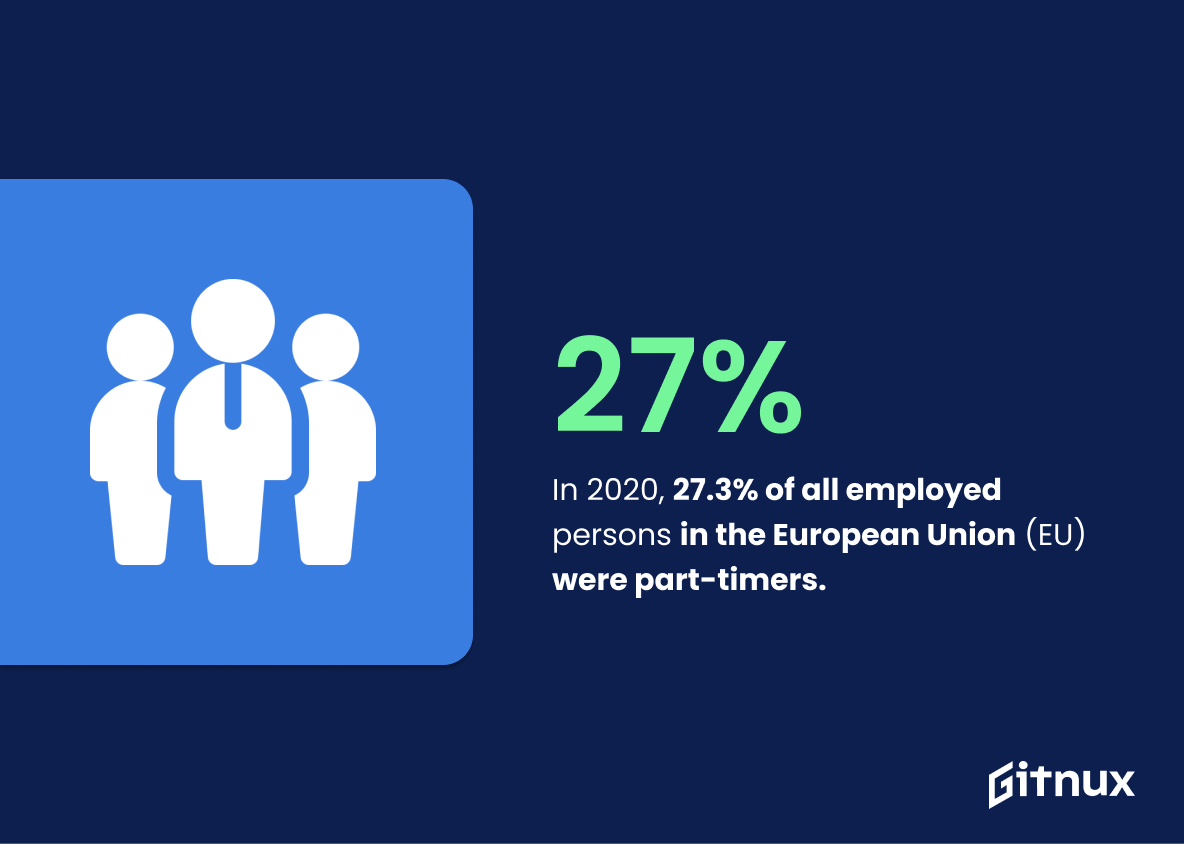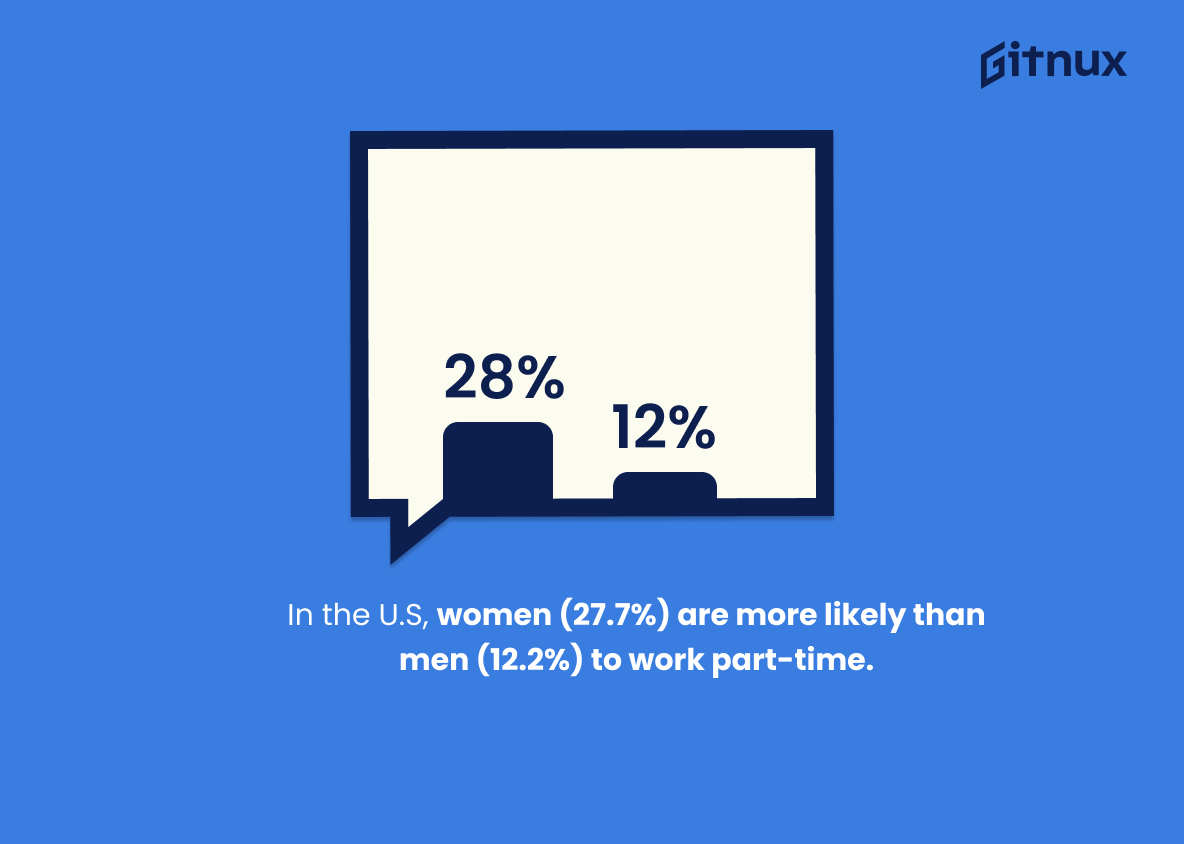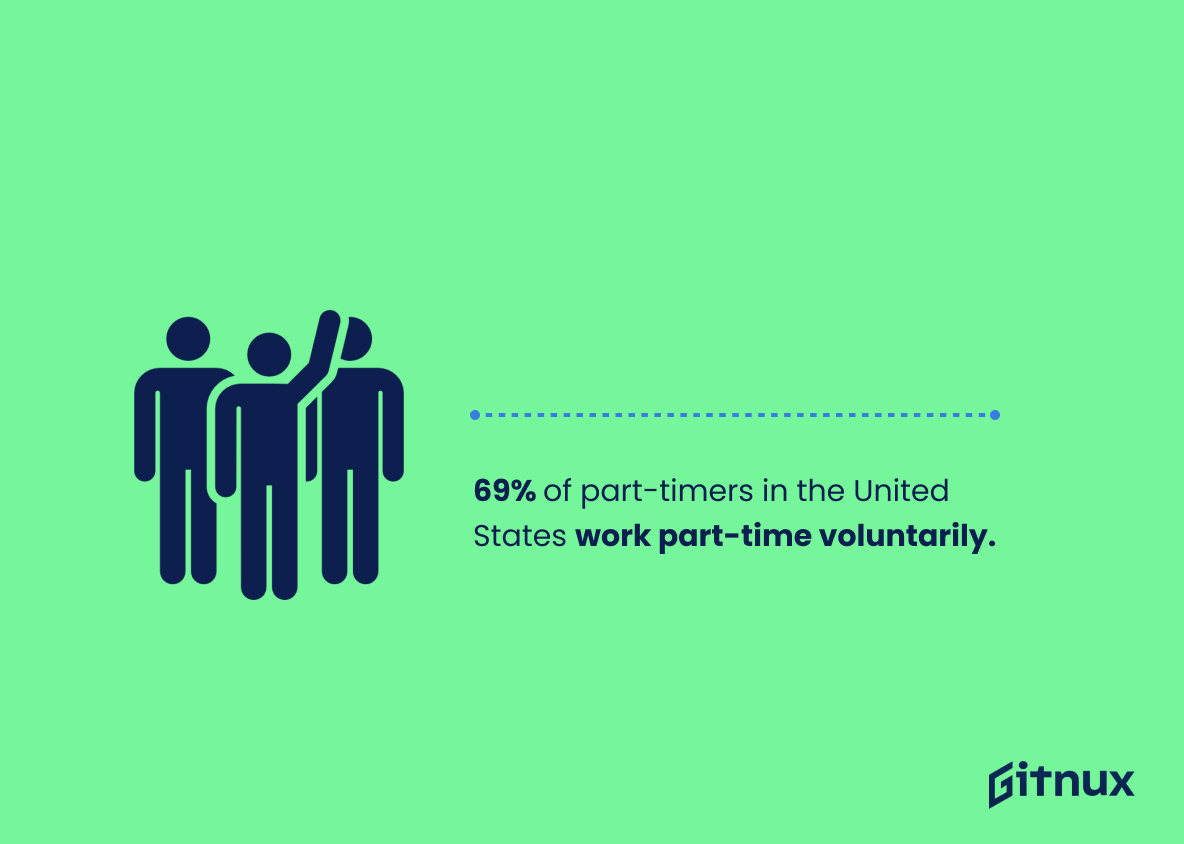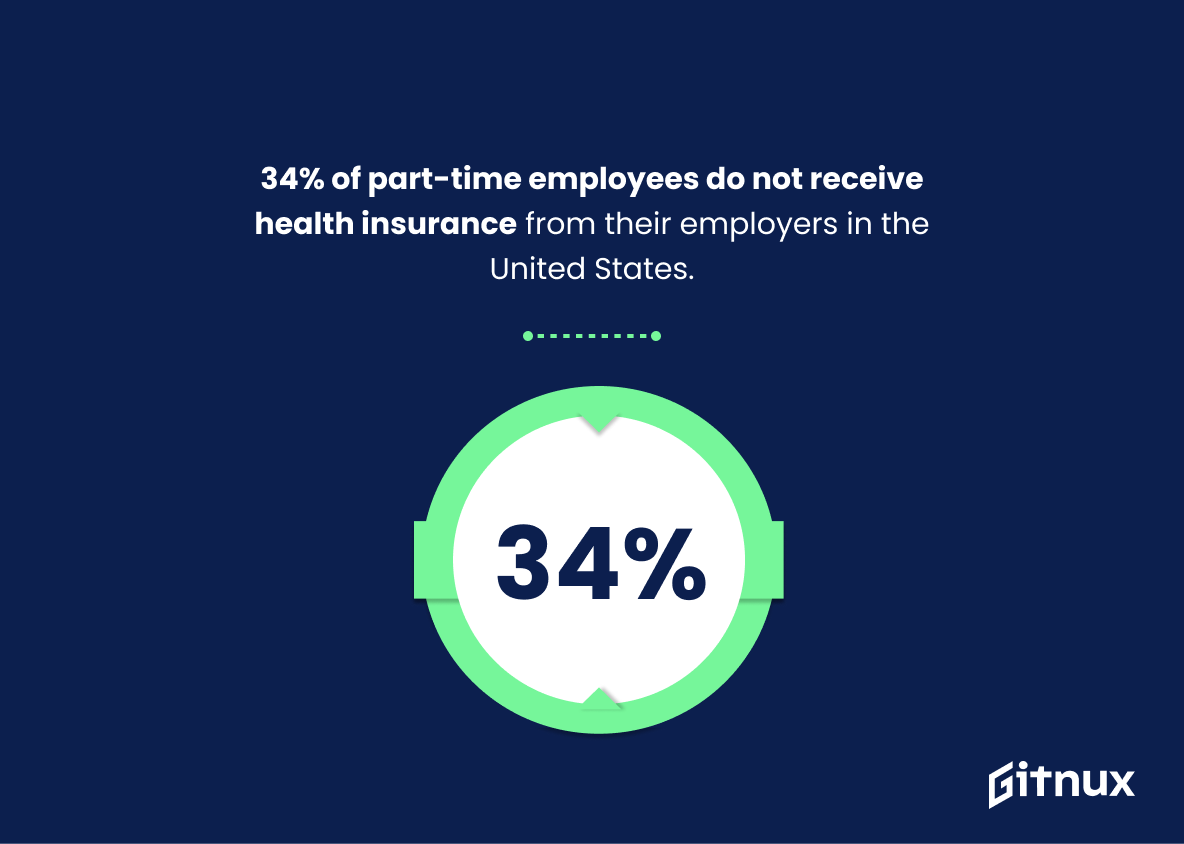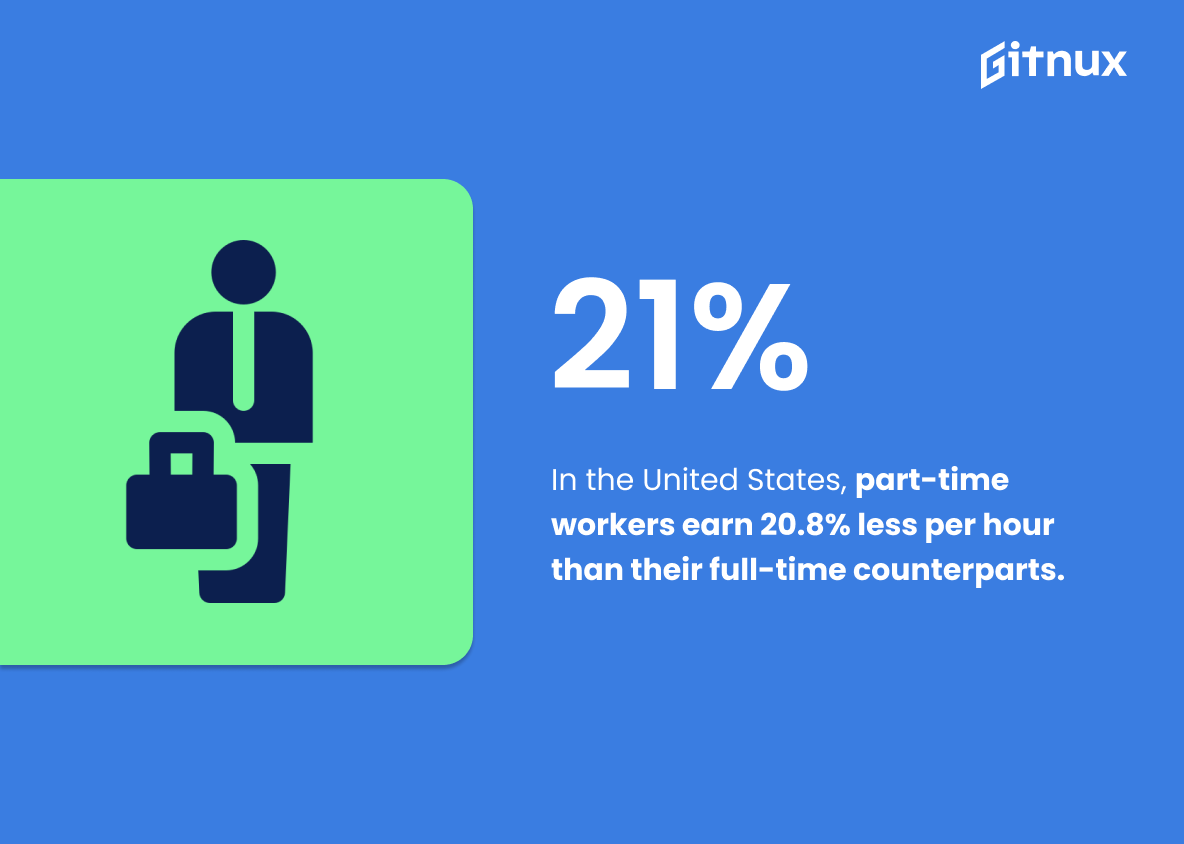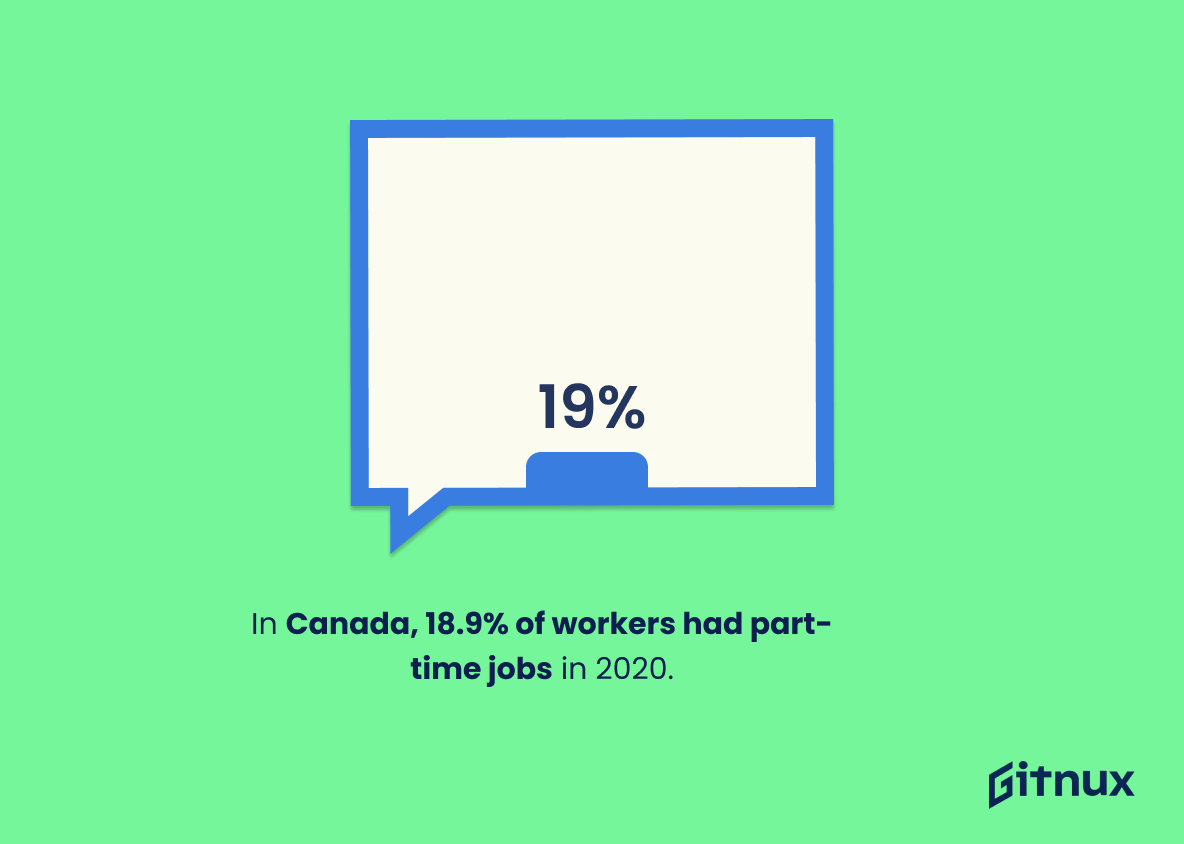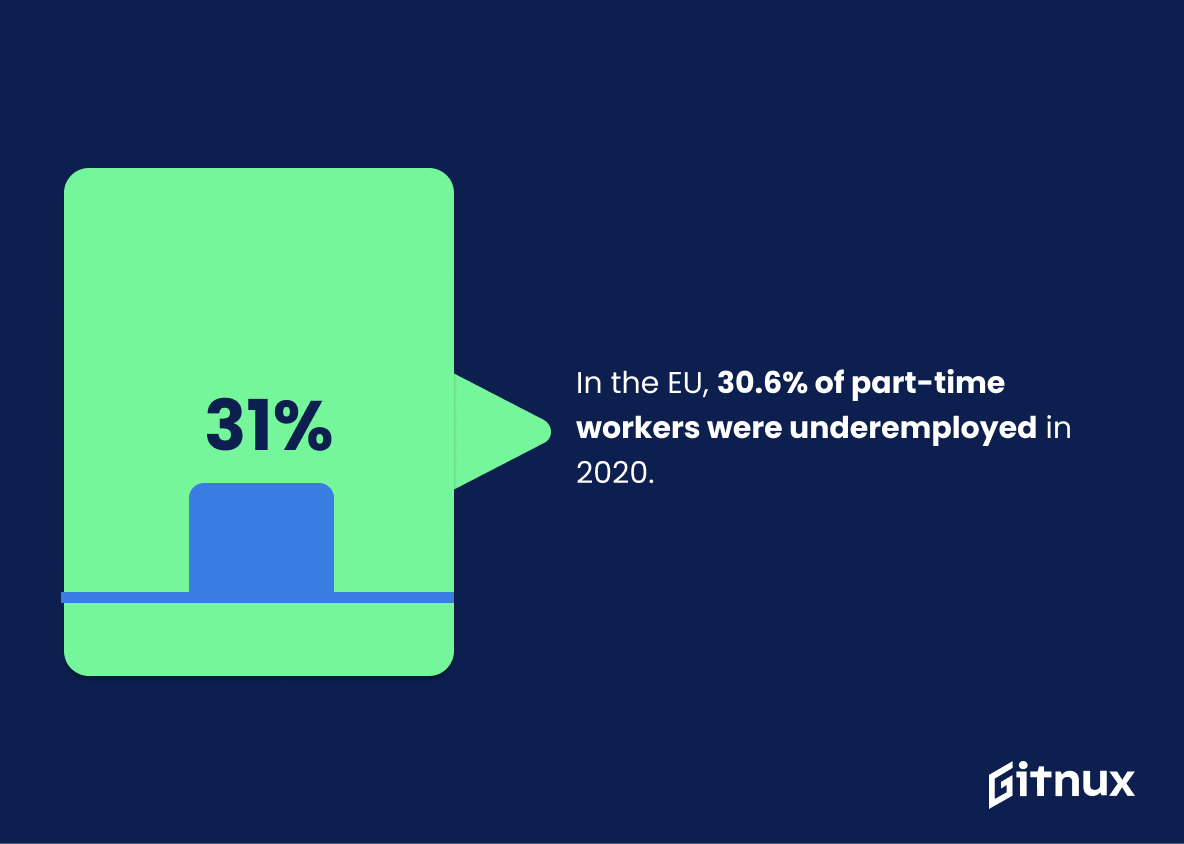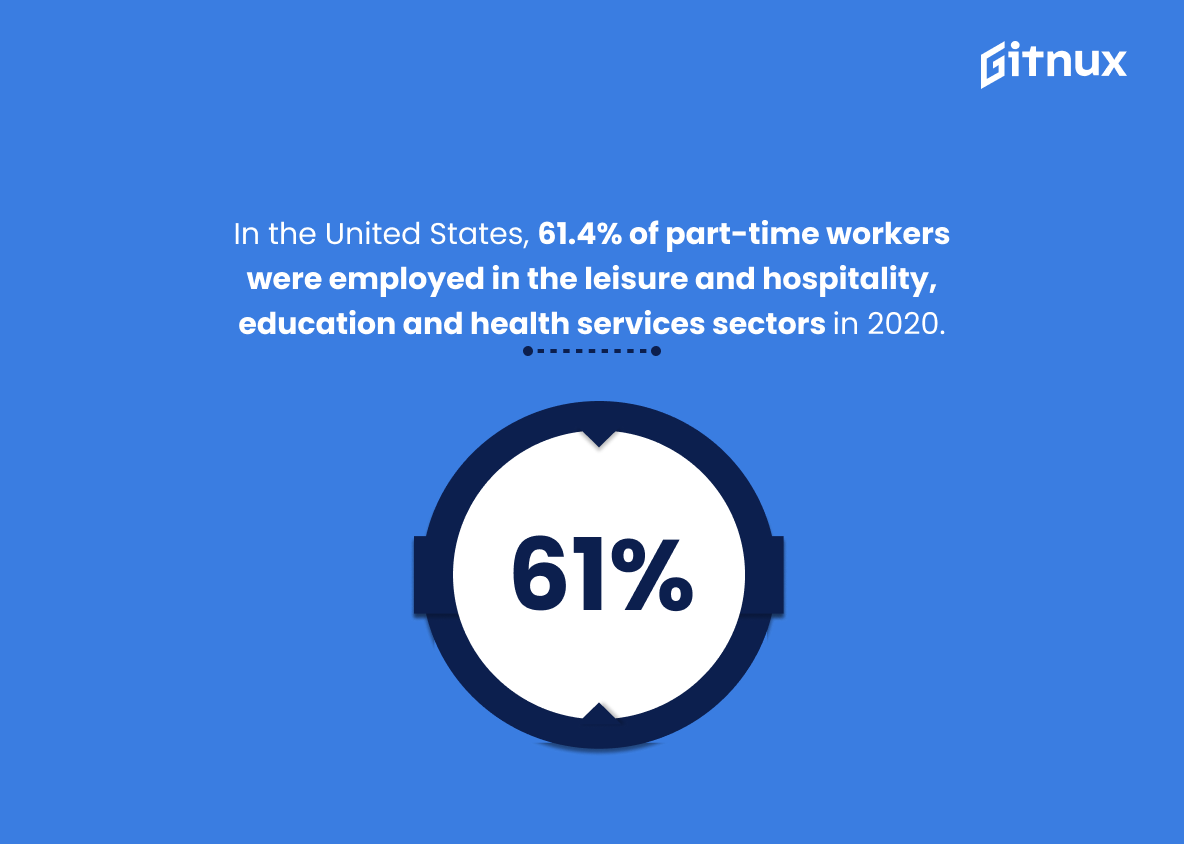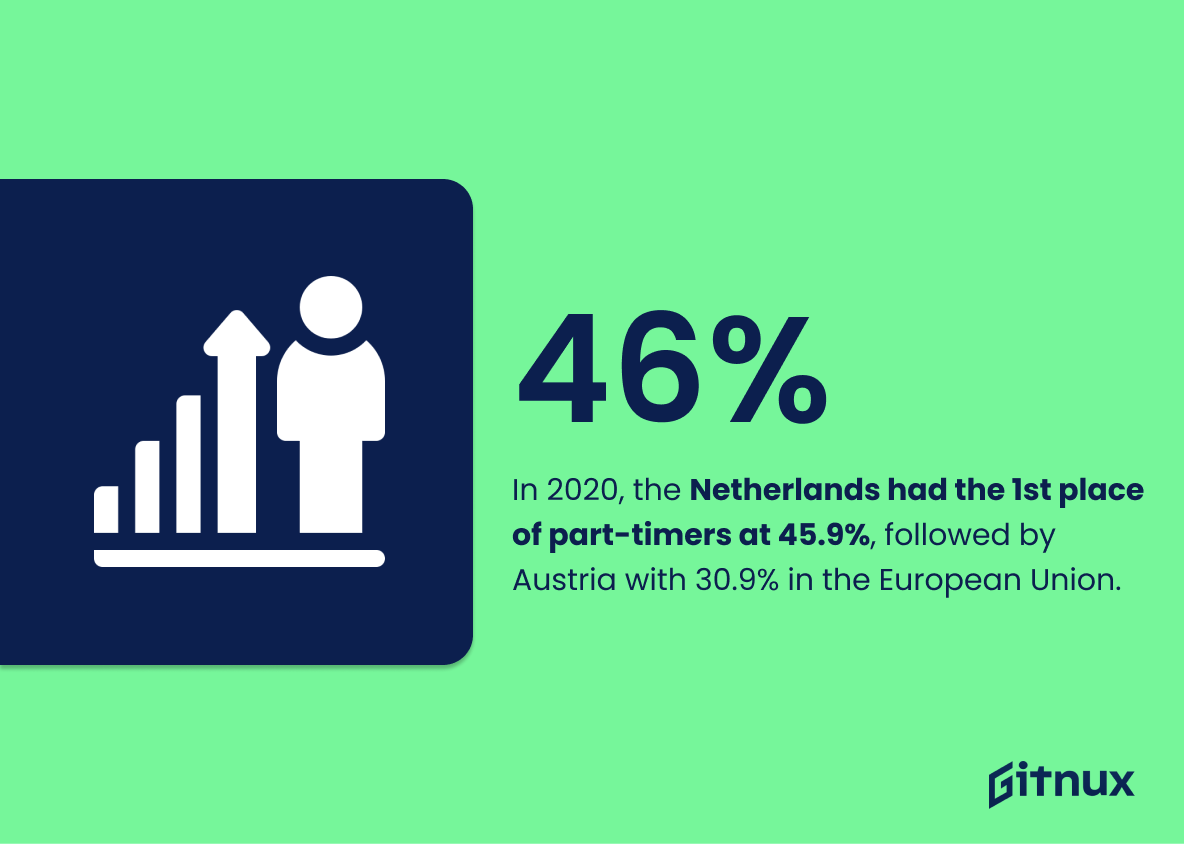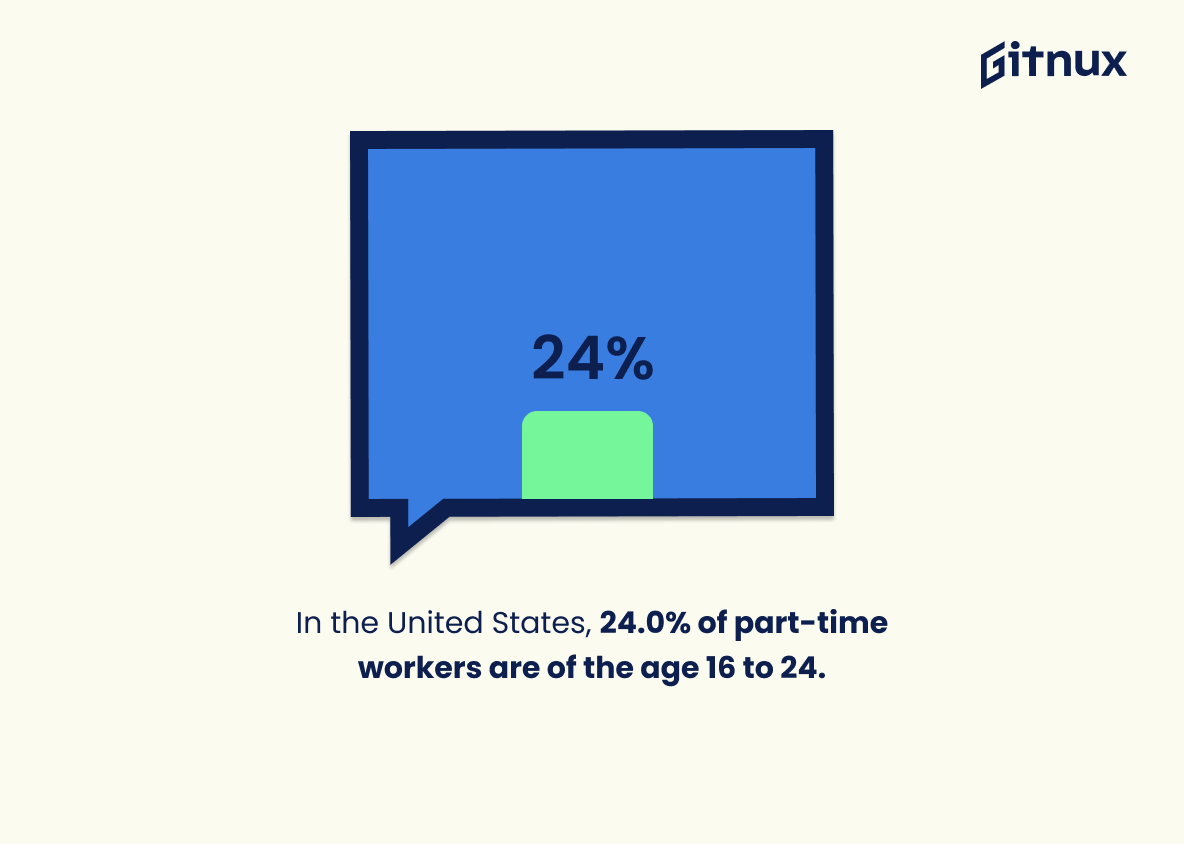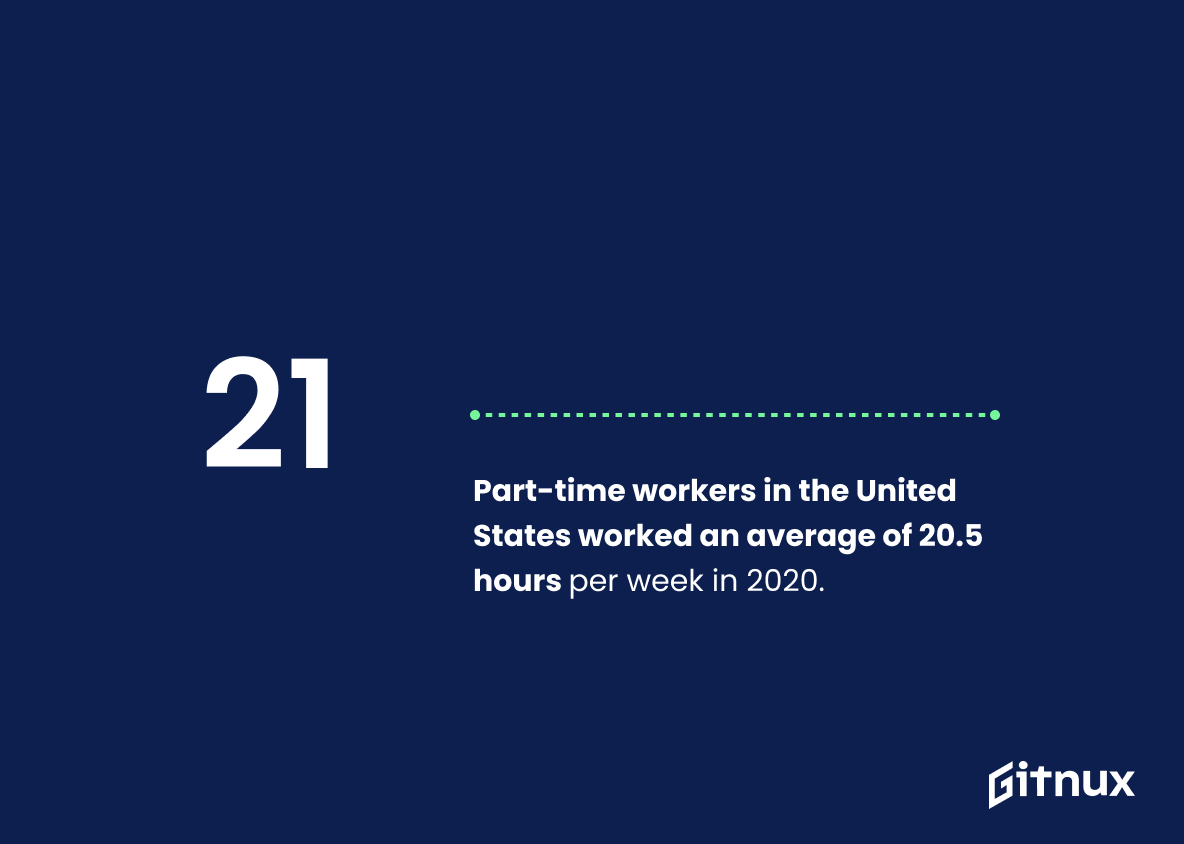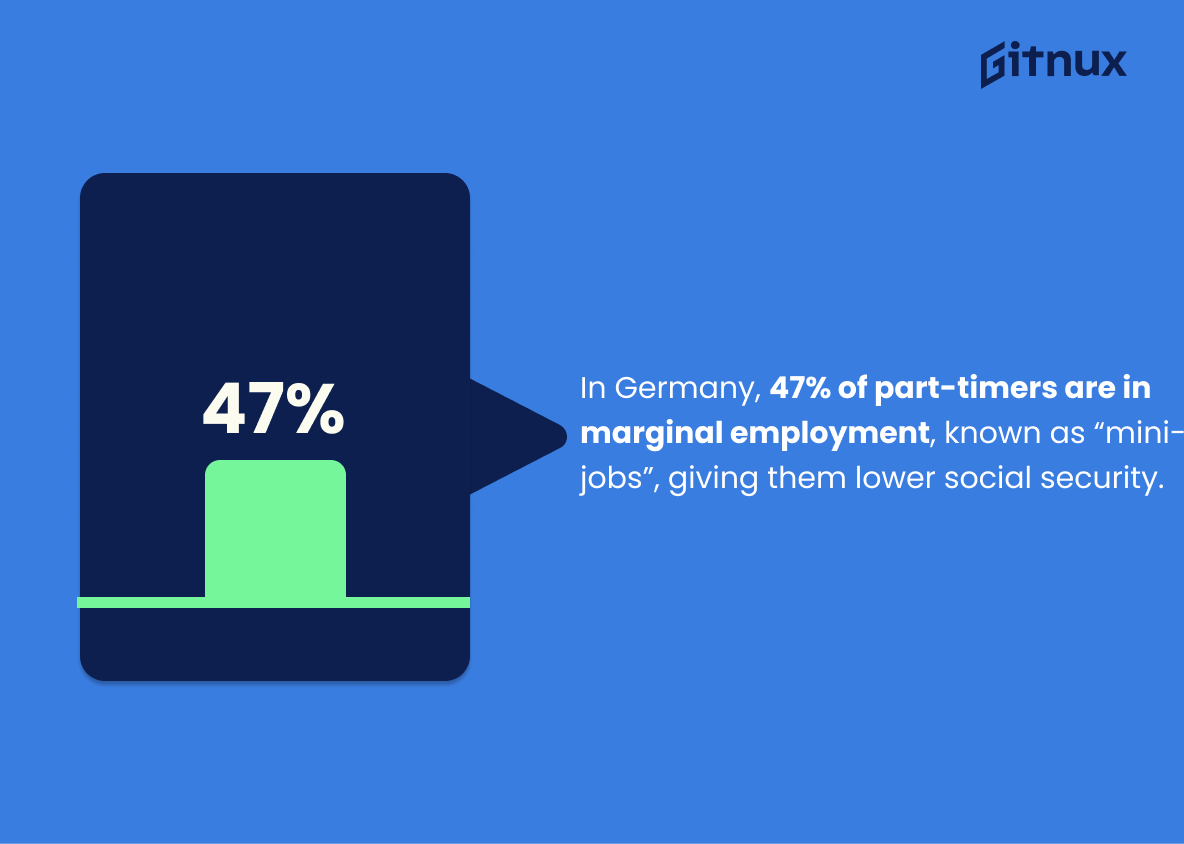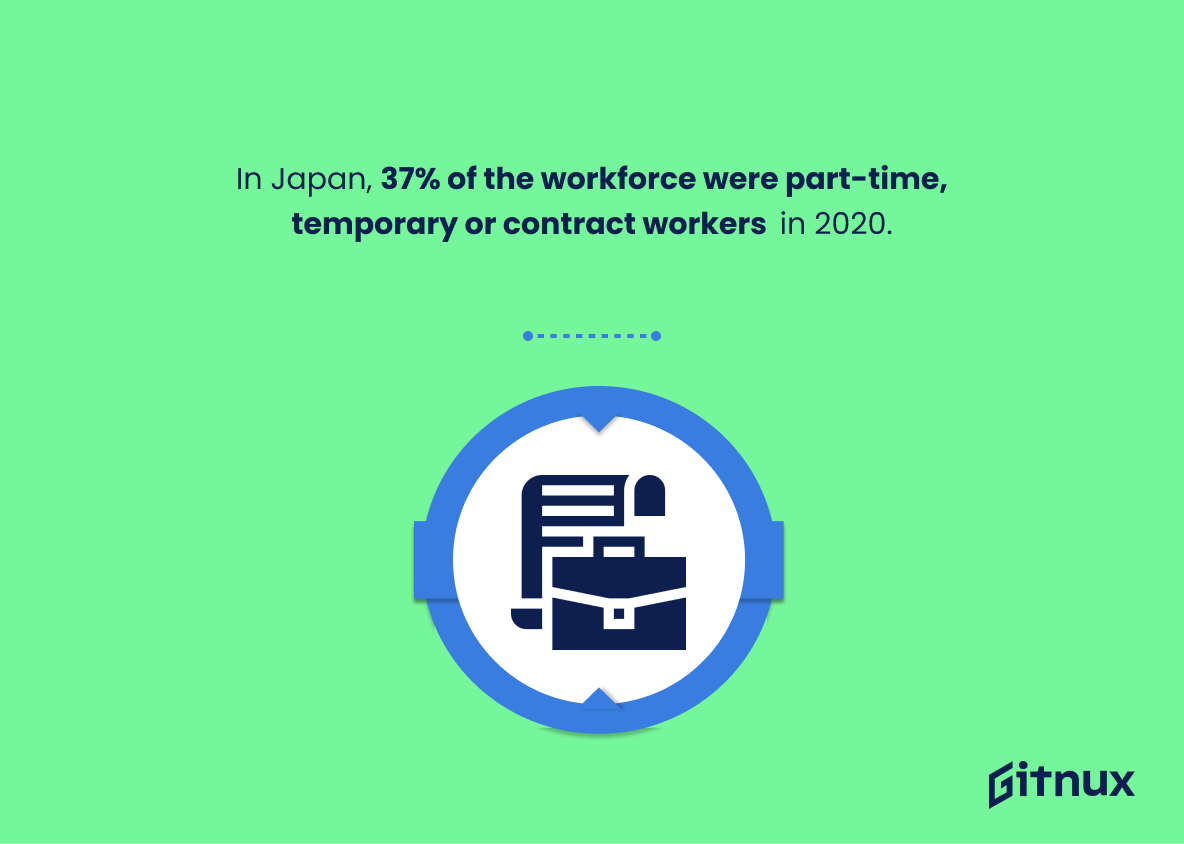The world of work is constantly changing, and the statistics on part-time versus full-time employment reflect this. From the United States to Europe, Australia to Japan, there are a variety of trends in terms of who works part time and why they do so. This blog post will explore 20 different statistics from around the world that provide insight into how many people are working part time or multiple jobs, what industries employ them most often, their wages compared to those with full-time positions and more. We’ll also look at which countries have higher percentages of workers employed in marginal roles such as mini-jobs or contract work. By examining these figures we can gain an understanding about how our global workforce is evolving over time.
This statistic is a telling indication of the prevalence of part-time employment in the U.S. workforce. It suggests that a significant portion of the workforce is relying on multiple jobs to make ends meet, which speaks to the need for more full-time employment opportunities. This statistic is an important factor to consider when discussing the differences between part-time and full-time employment.
Part-time workers constitute 43% of the UK workforce.
This statistic is a powerful indicator of the prevalence of part-time work in the UK. It highlights the fact that a significant portion of the workforce is employed on a part-time basis, and thus provides a valuable insight into the current state of the labour market. This information can be used to inform discussions about the advantages and disadvantages of part-time employment, and to assess the impact of part-time work on the UK economy.
Part-Time Vs Full-Time Employment Statistics Overview
In 2020, 27.3% of all employed persons in the European Union (EU) were part-timers.
This statistic is a telling indication of the prevalence of part-time employment in the European Union. It highlights the fact that a significant portion of the EU workforce is employed on a part-time basis, which has implications for the labor market and the economy as a whole. This statistic is therefore an important piece of information to consider when discussing the differences between part-time and full-time employment.
In the United States, women are more likely than men to work part-time, with 27.7% of women working part-time compared to 12.2% of men.
This statistic is significant in the context of a blog post about Part-Time Vs Full-Time Employment Statistics because it highlights the gender disparity in the labor force. It demonstrates that women are more likely to be employed in part-time positions than men, which could be indicative of a larger issue of gender inequality in the workplace.
69% of part-timers in the United States work part-time voluntarily.
This statistic is significant in the context of a blog post about Part-Time Vs Full-Time Employment Statistics because it highlights the fact that many people are choosing to work part-time voluntarily, rather than out of necessity. This indicates that part-time work is a viable option for those who want to balance their work and personal lives, and that it can be a rewarding and fulfilling career choice.
In 2019, there were nearly 7.4 million involuntary part-time workers in the United States.
This statistic is a stark reminder of the reality of the current job market in the United States. It highlights the fact that, despite the overall low unemployment rate, there are still millions of people who are unable to find full-time employment and are instead stuck in part-time positions. This statistic is a powerful indicator of the need for more full-time job opportunities and better job security for those who are already employed.
34% of part-time employees do not receive health insurance from their employers in the United States.
This statistic is a stark reminder of the disparities between part-time and full-time employment in the United States. It highlights the fact that part-time employees are often not provided with the same benefits as their full-time counterparts, such as health insurance. This can have a significant impact on the quality of life of part-time employees, as they may not be able to afford the necessary medical care without the help of their employer. This statistic is an important factor to consider when discussing the differences between part-time and full-time employment.
In the United States, part-time workers earn 20.8% less per hour than their full-time counterparts.
This statistic is a stark reminder of the financial implications of part-time employment. It highlights the fact that, despite the flexibility and other benefits that part-time work can offer, it is often accompanied by a significant pay cut. This is an important point to consider when discussing the pros and cons of part-time versus full-time employment.
In Canada, 18.9% of workers had part-time jobs in 2020.
This statistic is a telling indication of the prevalence of part-time employment in Canada. It serves as a reminder that part-time work is a significant part of the Canadian labour market, and that it is important to consider when discussing employment statistics. It also highlights the need to understand the implications of part-time work, such as the potential for lower wages and fewer benefits, and how this affects workers and their families.
In Australia, the proportion of part-time workers rose from 9.1% in 1978 to 31.5% in 2018.
This statistic is a powerful indicator of the changing landscape of employment in Australia. It shows that the number of part-time workers has grown significantly over the past four decades, from 9.1% in 1978 to 31.5% in 2018. This shift in the workforce has had a major impact on the economy, with more people now relying on part-time work to make ends meet. This statistic is an important reminder of the need to ensure that part-time workers are provided with adequate support and protection in the workplace.
In the EU, 30.6% of part-time workers were underemployed in 2020.
This statistic is a stark reminder of the reality of part-time employment in the EU. It highlights the fact that, despite the flexibility and other benefits that part-time work can offer, it can also come with a significant downside: underemployment. This statistic is a powerful illustration of the need to ensure that part-time workers are not left behind in terms of job security and wages.
In the United States, 61.4% of part-time workers were employed in the leisure and hospitality, education and health services sectors in 2020.
This statistic is a telling indication of the current state of part-time employment in the United States. It reveals that the majority of part-time workers are employed in the leisure and hospitality, education and health services sectors, which suggests that these industries are the most likely to offer part-time positions. This information is essential for anyone looking to gain insight into the part-time job market and can be used to inform decisions about which sectors to target when searching for part-time employment.
In 2020, the Netherlands had the highest percentage of part-timers at 45.9%, followed by Austria with 30.9% in the European Union.
This statistic is a telling indication of the prevalence of part-time employment in the European Union. The Netherlands and Austria have the highest percentages of part-time workers, indicating that part-time work is a popular option for many Europeans. This statistic is important to consider when discussing the advantages and disadvantages of part-time versus full-time employment, as it provides insight into the prevalence of part-time work in the EU.
In the United States, 24.0% of part-time workers are of the age 16 to 24.
This statistic is significant in the context of part-time vs full-time employment statistics because it highlights the prevalence of young people in the part-time workforce. It is important to note that a large portion of the part-time workforce is made up of young people, as this can have implications for their future career prospects and economic stability.
Part-time workers in the United States worked an average of 20.5 hours per week in 2020.
This statistic is a crucial indicator of the current state of part-time employment in the United States. It provides insight into the amount of hours part-time workers are dedicating to their jobs, and how this compares to the hours of full-time workers. This information can be used to compare the benefits and drawbacks of part-time and full-time employment, and to assess the impact of part-time work on the overall economy.
In Germany, 47% of part-time employees are engaged in marginal employment, also known as “mini-jobs”, giving them lower social security.
This statistic is a stark reminder of the reality of part-time employment in Germany. It highlights the fact that a significant portion of part-time employees are not receiving the same level of social security as full-time employees, leaving them vulnerable to financial insecurity. This is an important issue to consider when discussing the pros and cons of part-time versus full-time employment.
In Japan, 37% of the workforce were part-time, temporary or contract workers in 2020.
This statistic is a telling indication of the prevalence of part-time, temporary, and contract work in Japan. It speaks to the reality that a large portion of the workforce is engaged in these types of employment, which can have a significant impact on the economy and the lives of those involved. This statistic is an important piece of the puzzle when it comes to understanding the dynamics of part-time vs full-time employment in Japan, and it should be taken into account when discussing the topic.
Around 1.55 million people in Australia combine part-time work with other forms of work, such as self-employment or a second part-time job.
This statistic is a telling indication of the prevalence of part-time work in Australia. It highlights the fact that many Australians are relying on multiple sources of income to make ends meet, which speaks to the importance of part-time employment in the country. This statistic is especially relevant to a blog post about Part-Time Vs Full-Time Employment Statistics, as it provides a snapshot of the current state of the job market in Australia.
In the EU, almost half (48.7%) of all part-time workers are in education or training.
This statistic is a telling indication of the importance of education and training in the part-time workforce of the EU. It highlights the need for part-time workers to stay up-to-date with the latest skills and knowledge in order to remain competitive in the job market. This is especially true for those who are looking to transition from part-time to full-time employment, as having the right qualifications and experience can make a huge difference in the success of their job search.
Conclusion
The statistics presented in this blog post demonstrate the prevalence of part-time work across different countries and regions. In 2019, 5% of the U.S. workforce held more than one job, while 43% of UK workers were employed on a part-time basis. The European Union (EU) had 27.3% part-timers in 2020, with women being more likely to be working part time compared to men at 27.7%. Additionally, 69% of US part timers worked voluntarily whereas 34 % did not receive health insurance from their employers and earned 20 .8 % less per hour than full time counterparts respectively In Canada 18 .9 % had jobs that were considered as ‘part -time’ , Australia saw an increase from 9 .1 % in 1978 to 31 .5 % by 2018 , Netherlands having 45 .9%, Austria 30 .9%, Germany 47%, Japan 37%. Furthermore 1 55 million people combined Part Time Work with other forms such as self employment or second Part Time Job whilst 2 4 percent Full Timers & 10 1 Percent Part Timers lived below poverty level respectively Lastly 48 7 percent all EU based PT Workers are engaged Education/Training related activities These figures show how prevalent and important it is for governments around the world to ensure adequate protection for those who choose or have no choice but take up these types of roles
References
0. – https://www.kff.org
1. – https://www.epi.org
2. – https://www.abs.gov.au
3. – https://www.50.statcan.gc.ca
4. – https://www.bls.gov
5. – https://www.ft.com
6. – https://www.destatis.de
7. – https://www.japantimes.co.jp
8. – https://www.ec.europa.eu
